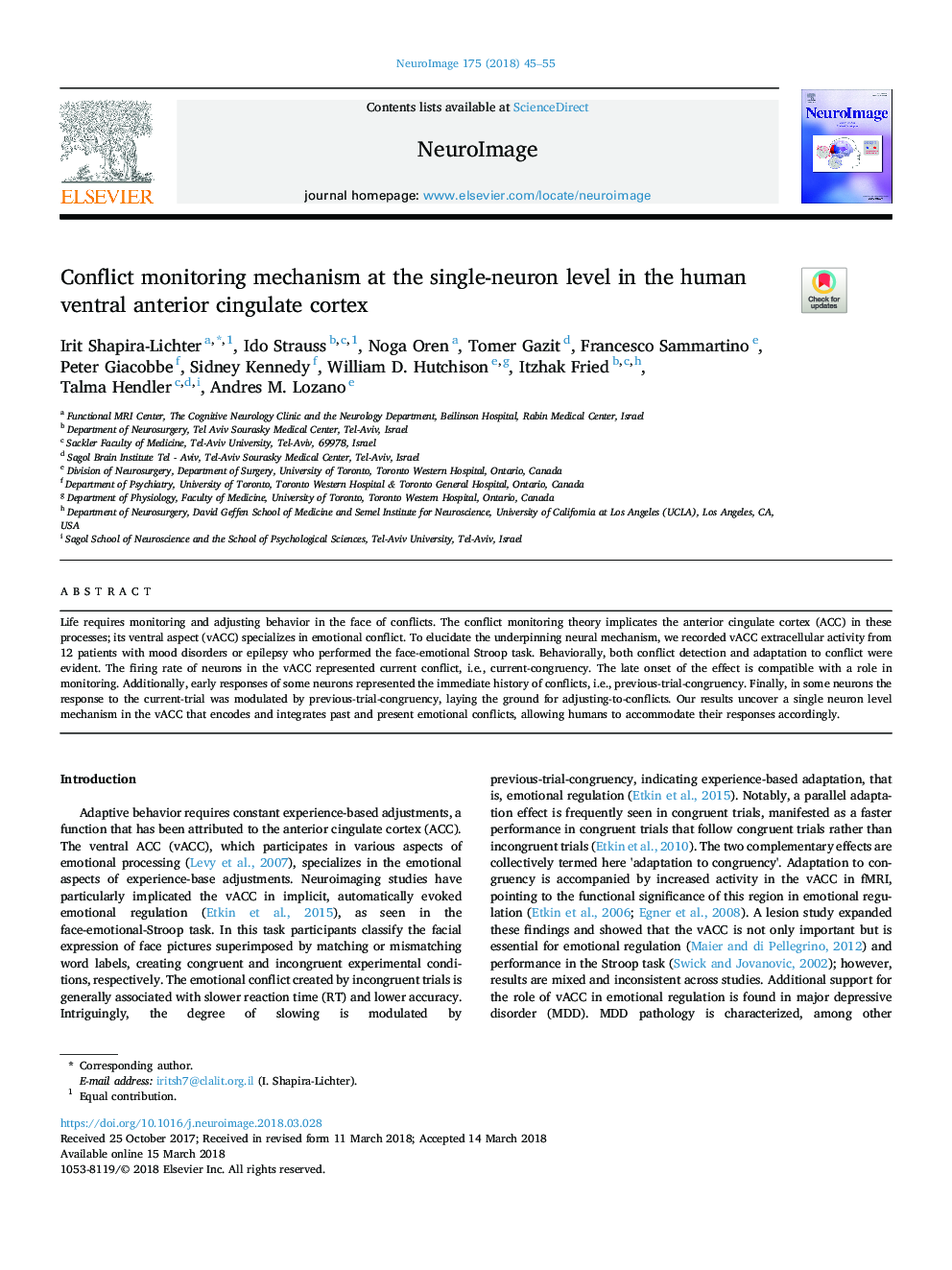| Article ID | Journal | Published Year | Pages | File Type |
|---|---|---|---|---|
| 8686862 | NeuroImage | 2018 | 11 Pages |
Abstract
Life requires monitoring and adjusting behavior in the face of conflicts. The conflict monitoring theory implicates the anterior cingulate cortex (ACC) in these processes; its ventral aspect (vACC) specializes in emotional conflict. To elucidate the underpinning neural mechanism, we recorded vACC extracellular activity from 12 patients with mood disorders or epilepsy who performed the face-emotional Stroop task. Behaviorally, both conflict detection and adaptation to conflict were evident. The firing rate of neurons in the vACC represented current conflict, i.e., current-congruency. The late onset of the effect is compatible with a role in monitoring. Additionally, early responses of some neurons represented the immediate history of conflicts, i.e., previous-trial-congruency. Finally, in some neurons the response to the current-trial was modulated by previous-trial-congruency, laying the ground for adjusting-to-conflicts. Our results uncover a single neuron level mechanism in the vACC that encodes and integrates past and present emotional conflicts, allowing humans to accommodate their responses accordingly.
Related Topics
Life Sciences
Neuroscience
Cognitive Neuroscience
Authors
Irit Shapira-Lichter, Ido Strauss, Noga Oren, Tomer Gazit, Francesco Sammartino, Peter Giacobbe, Sidney Kennedy, William D. Hutchison, Itzhak Fried, Talma Hendler, Andres M. Lozano,
